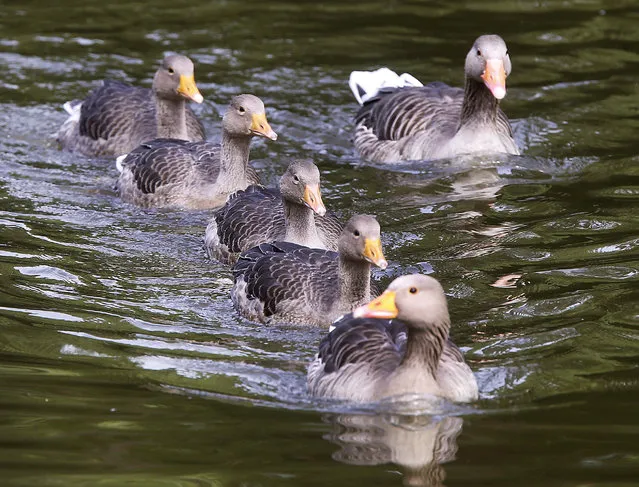
Young geese swim in a row watched by their mother, right, on the river Main in Frankfurt, Germany, Thursday, June 8, 2017. (Photo by Michael Probst/AP Photo)
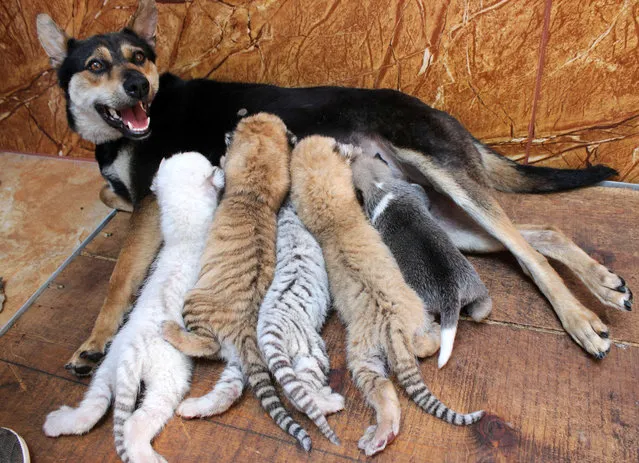
A dog feeds four newborn tiger cubs and a puppy at Xixiakou Wild Animal Protection Zone in Rongcheng, Shandong province, China June 14, 2017. (Photo by Reuters/Stringer)
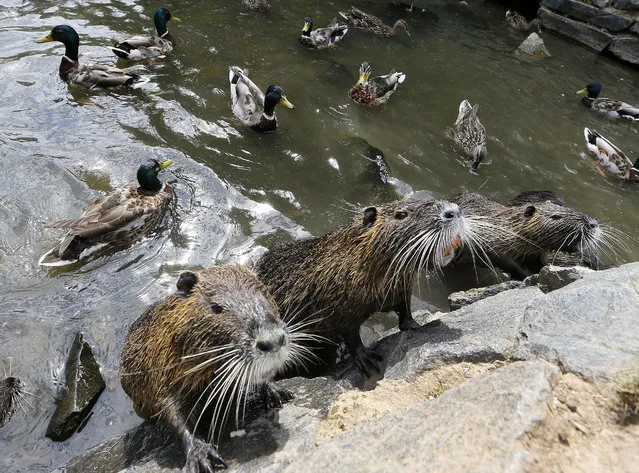
Nutrias gather at the shore of a small river in Frankfurt, Germany, Thursday, June 15, 2017. (Photo by Michael Probst/AP Photo)
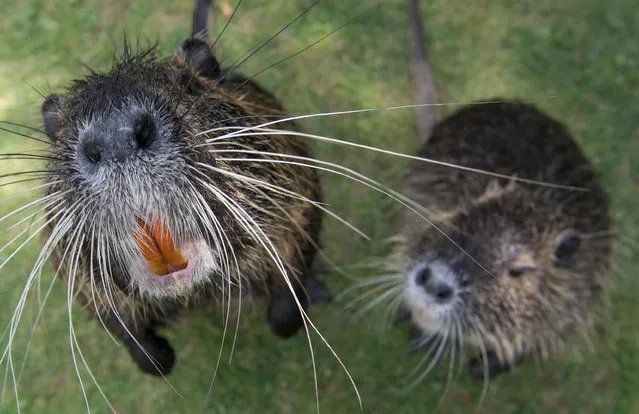
Nutrias venture near the camera at the river Nidda in Frankfurt am Main, Germany, 15 June 2017. The rabbit sized animals are often confused with biebers by amateurs. (Photo by Boris Roessler/DPA)
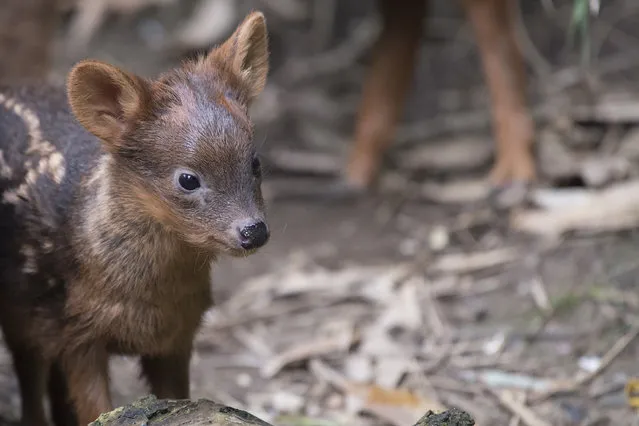
A southern pudu fawn (Pudu puda) – the world's smallest deer species – was born at the WCS's (Wildlife Conservation Society) Queens Zoo. The Queens Zoo has seen substantial success with its pudu breeding program in recent years, having produced four fawns in the last five years. Pudu have some interesting behavioral adaptations for a deer species. They bark when they sense danger, and when chased, they run in a zig-zag pattern to escape predators. The fawn was born on May 17 and is male. The white spots, characteristic to newborns of many deer species, will fade and disappear as the fawn gets older. He will grow quickly, but will only be approximately 12-14 inches tall as an adult. (Photo by Julie Larsen Maher/WCS/UPI/Barcroft Images)
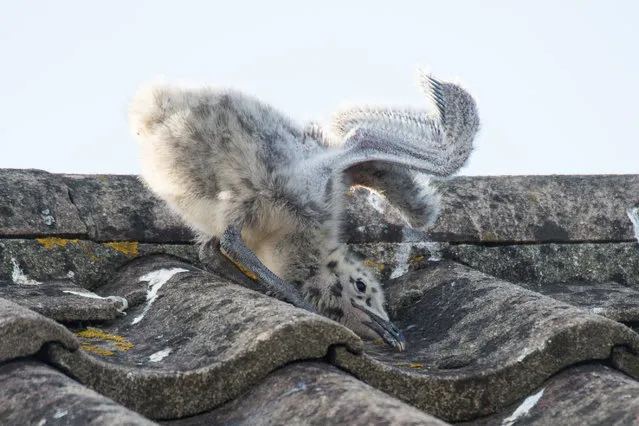
With nesting season in full swing, a mother seagull watches over her baby seagulls failed flying attempts during nesting season at Russell Road on June 15, 2017 in West Wittering, West Sussex, England. (Photo by Jason Hedges/Barcroft Images)
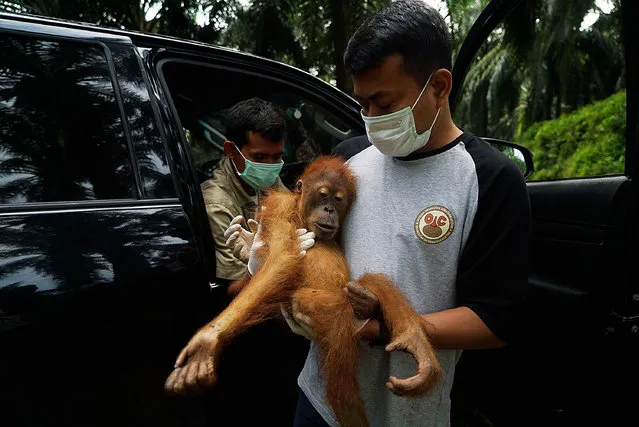
Environmental activists at “The Human Orangutan Conflict Response Unit – Orangutan Information Center” (HOCRU – OIC) saves the Sumatran orangutan trapped in oil palm plantations on June 10, 2017 in North Sumatra, Indonesia, It is illegal to capture, kill, or keep orangutans as pets in Indonesia, prosecutions are rare and orangutan often meet this fate. Adult orangutan with her son is one of the “lucky” that was saved by The Human Orangutan Conflict Response Unit – Orangutan Information Center (HOCRU – OIC) and taken to the forest Gunung Leuser National Park after being stuck on palm oil plantations. Sumatran orangutans (Pongo abelii) are a distinct species and listed as Endangered by the World Conservation Union (IUCN) on their Red List of Threatened Species. The Sumatran orangutan is considered the more immediately in danger of extinction, with only around 6,600 or so left in the wild today, and is therefore classified as Critically Endangered. The species is also listed on Appendix 1 of the Convention on International Trade in Endangered Species (CITES), under which animals smuggled out of their natural range country and confiscated should whenever possible be repatriated and returned to the wild. (Photo by Jefta Images/Barcroft Images)
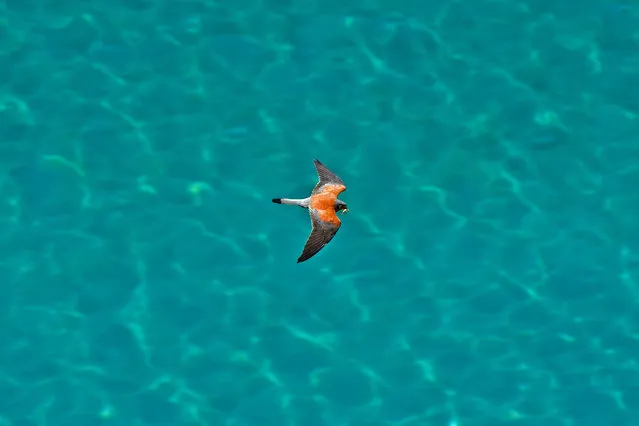
A falcon carries its prey in its beaks as it flies over the beach of Arvanitia in Nafplio, Peloponnese, Greece, 15 June 2017. (Photo by Bougiotis Vangelis/EPA)
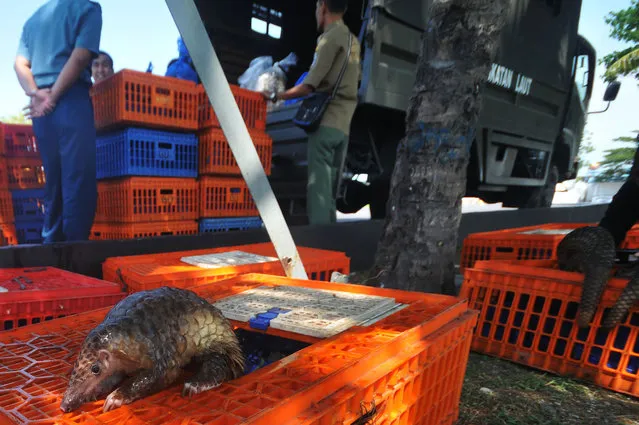
This picture taken on June 13, 2017 shows a live pangolin among crates of containing the threatened animal seized by authorities in an anti- smuggling raid in Belawan, North Sumatra Indonesian authorities have seized hundreds of critically endangered pangolins and scales in a haul worth 190,000 USD after uncovering a major smuggling operation, an official said on June 14. (Photo by Gatha Ginting/AFP Photo)
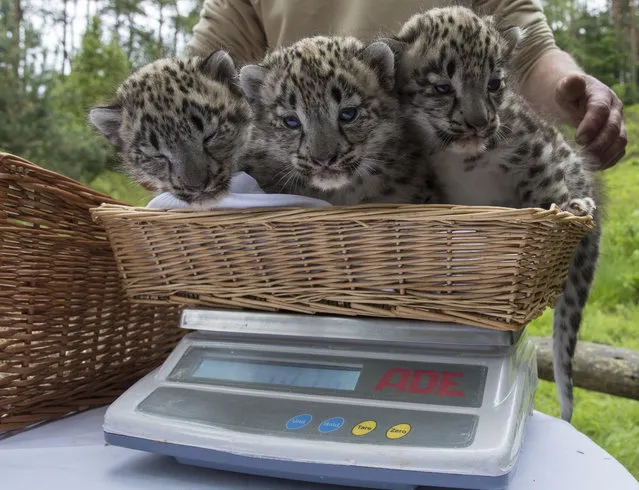
Three snow leopard cubs, born 32 days ago, are weighed at the Wildpark Lueneburger Heide wildlife park in Nindorf-Hanstedt, Germany, Thursday, June 8, 2017. (Photo by Ingo Wagner/DPA via AP Photo)
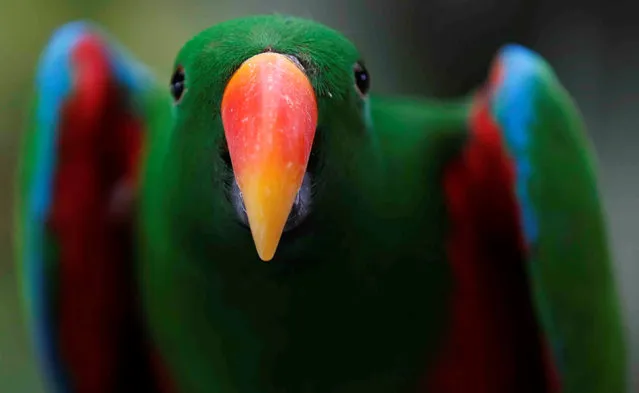
A parrot at the Africano animal park on the Cairo-Alexandria desert road, Egypt on June 7, 2017. (Photo by Amr Abdallah Dalsh/Reuters)
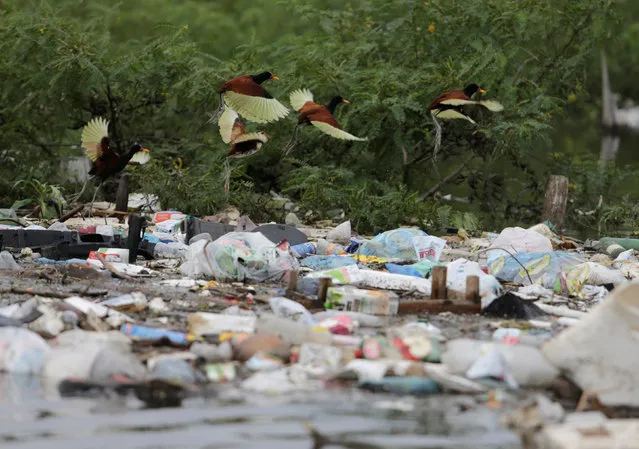
Wattled jacana birds fly over garbage floating in the Mburica stream in Asunción, Paraguay. (Photo by Jorge Adorno/Reuters)
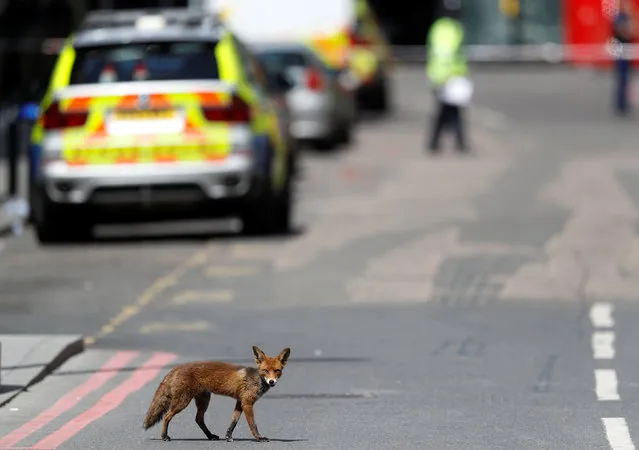
An urban fox crosses the road near Borough Market after an attack left 7 people dead and dozens injured in London, Britain, June 4, 2017. (Photo by Peter Nicholls/Reuters)
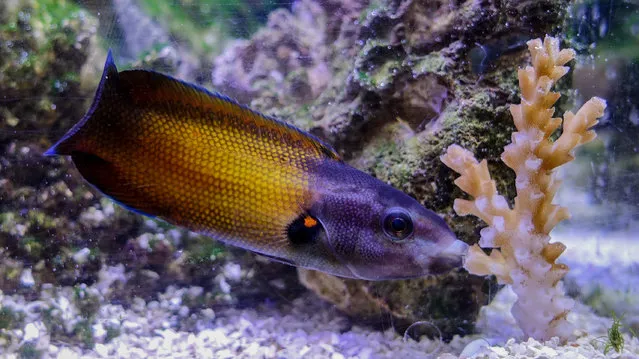
A colorful reef fish called a tubelip wrasse is seen feeding on coral in this undated photo released by James Cook University researchers in Townsville, Queensland, Australia on June 5, 2017. (Photo by Courtesy Victor Huertas and David Bellwood/Reuters)
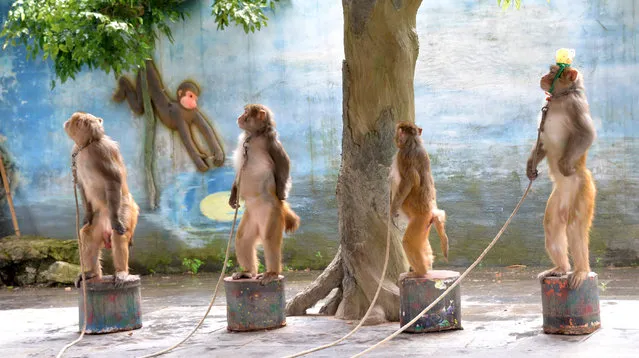
Monkeys practice standing under an order from their trainer, during a training session at a monkey performance venue in Zunyi, China on June 11, 2017. (Photo by Reuters/Stringer)
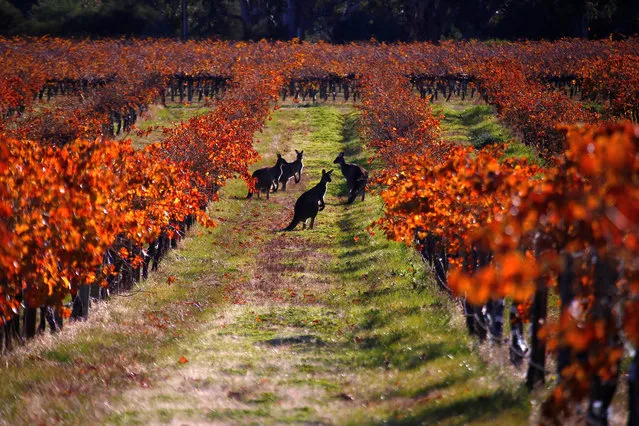
A group of Kangaroos can be seen between rows of vines at the Charles Melton vineyard located in the Barossa Valley, north of Adelaide in Australia on June 13, 2017. (Photo by David Gray/Reuters)
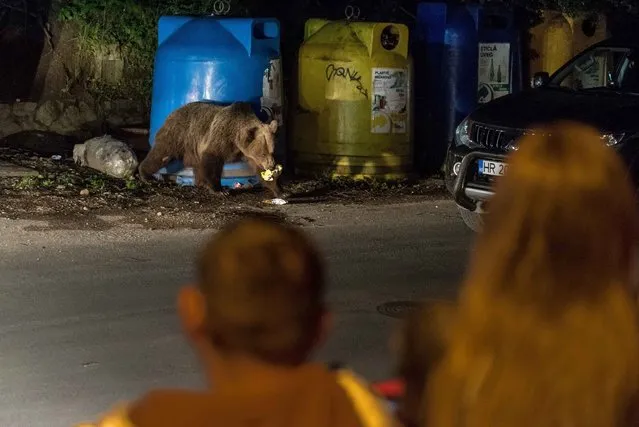
Tourists watch a wild brown bear eating leftovers found in waste containers, in Baile Tusnad, County Harghita in Transylvania, Romania, 09 June 2017 (issued on 10 June 2017). Foraging brown bears are common night visitors in the town known for its spas. (Photo by Nandor Veres/EPA/EFE)
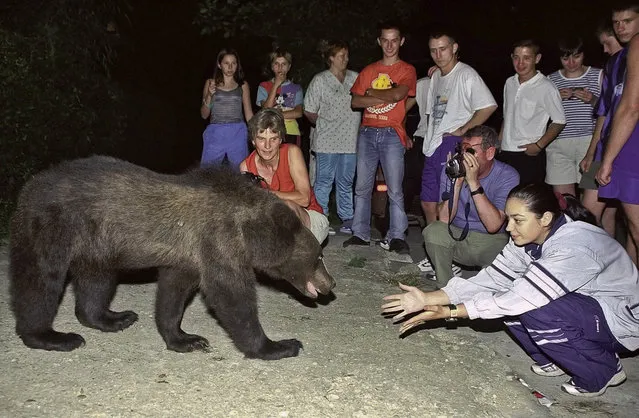
In this in this September 2002 file photo, a bear approaches a group of tourists gathered to watch it on the outskirts of Brasov, Romania. On Saturday, June 10, 2017 the website of a fortress connected to Vlad the Impaler announced that Romanian authorities closed the 13th Century fortress after a mother bear and her cubs were found roaming the area. Romania is home to between 5,000 and 6,000 brown bears. (Photo by Octavian Tibar/AP Photo)
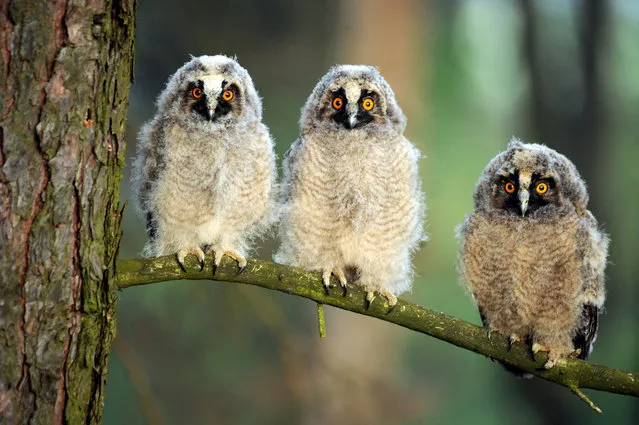
Three long-eared owl chicks sit on a tree branch during sunrise at a wildlife sanctuary near the village of Vygonoshchi, some 270 km southwest of Minsk, on June 6, 2017. (Photo by Sergei Gapon/AFP Photo)
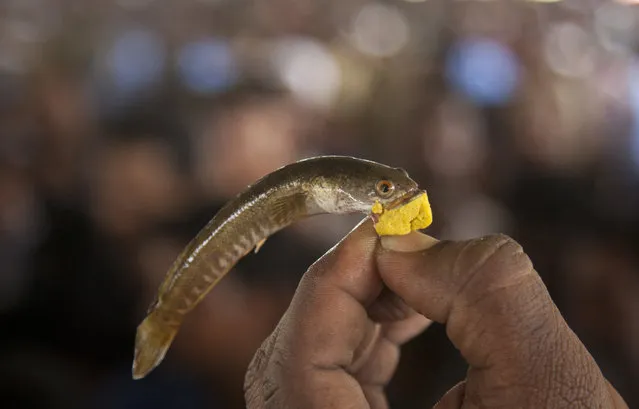
In this Thursday, June 8, 2017, file photo, an Indian man displays a live fish after inserting in its mouth a traditional medicine prior to administering it to an asthma patient in Hyderabad, India. Every year thousands of asthma patients arrive here to receive from Hyderabad's Bathini Goud family this fish therapy which is a secret formula of herbs, handed down by generations only to family members. The herbs are inserted in the mouth of a live sardine, or murrel fish, and slipped into the patient's throat. (Photo by Mahesh Kumar A./AP Photo)
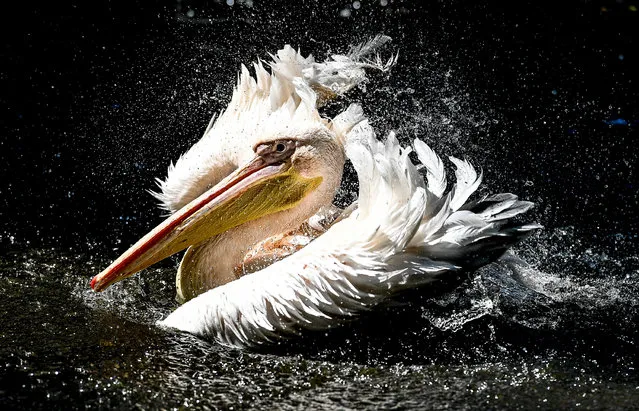
A great white pelican cools off in a pond in the zoo of Dresden, Germany, 12 June 2017. Great white pelican birds predominantly breed in sub-Saharan African and northern India. (Photo by Filip Singer/EPA)
18 Jun 2017 03:24:00,
post received
0 comments
